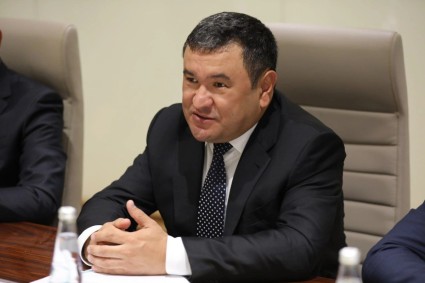The Uzbekistan Ministry of Electricity has commenced drafting Uzbekistan’s low-carbon electricty strategy. The document will reflect the transition to the production of electricity with low greenhouse gas emissions.
In Uzbekistan, in early May, the Concept for Providing Uzbekistan with Electricity for 2020–2030 was adopted, which was developed with the participation of the Asian Development Bank and the World Bank. The document provides for the modernization of existing power plants, the creation of renewable electricity sources and nuclear power plants. These measures will reduce greenhouse gas emissions by 10% by 2030 to 2010.
Currently, on the basis of this document, a Uzbekistan’s low-carbon electricity strategy of is being developed, in the preparation of which experts from the European Bank for Reconstruction and Development are involved. the strategy is necessary to solve the problem of the country's demand for electricity, on the one hand, and to reduce the negative impact on the environment, on the other.
“The strategy for the transition to low-carbon electricity is being developed using the method of modeling the country's electricity system and possible future development scenarios. This will be done by the international consulting company Corporate Solutions. In parallel, we are studying the experience of Germany, Japan, Spain. But one must understand that the experience of these countries cannot be fully applied in the conditions of Uzbekistan. An individual development plan will be selected for our country with the maximum use of international experience,” said the Minister of Electricity of Uzbekistan Alisher Sultanov.
According to him, the transition to low-carbon electricity will provide an opportunity to provide the country with electricity at a steadily high growth rate while improving the quality of life of the population.
The electricity production system in the country is outdated and inefficient, almost completely dependent on natural gas and limited hydropower resources. The solution to the situation is the development of alternative electricity sources, such as the solar, wind and water, as well as the inclusion of nuclear electricity in the country's electricity mix. All these types of generation relate to methods of producing electricity with low carbon dioxide emissions, while nuclear electricity is able to provide the country with electricity on an industrial scale.
The strategy will reflect three scenarios of the transition to low-carbon electricity, and to ensure the effectiveness of the document, special attention will be paid to the development of renewable electricity, in particular, solar electricity.
According to the plan, by 2030, Uzbekistan expects to take hold of wind power plants with a total capacity of 3 GW, solar power plants with a total capacity of 5 GW, as well as nuclear power plants with a capacity of 2.4 GW.













